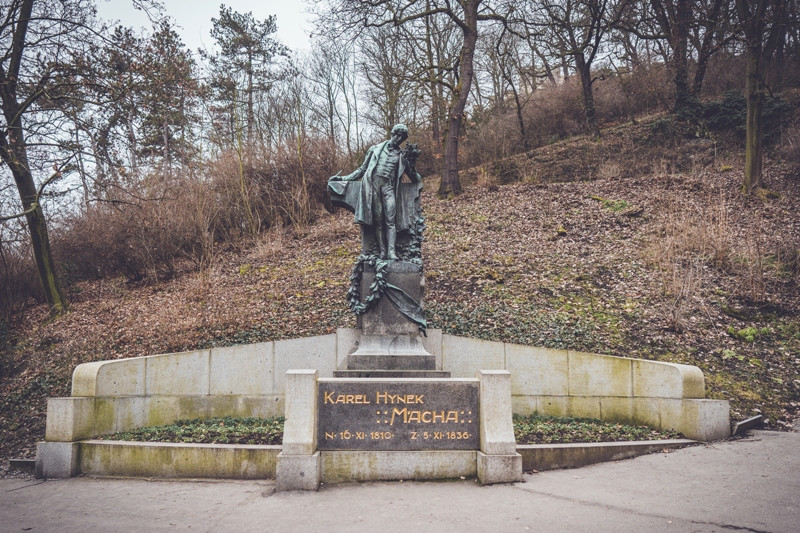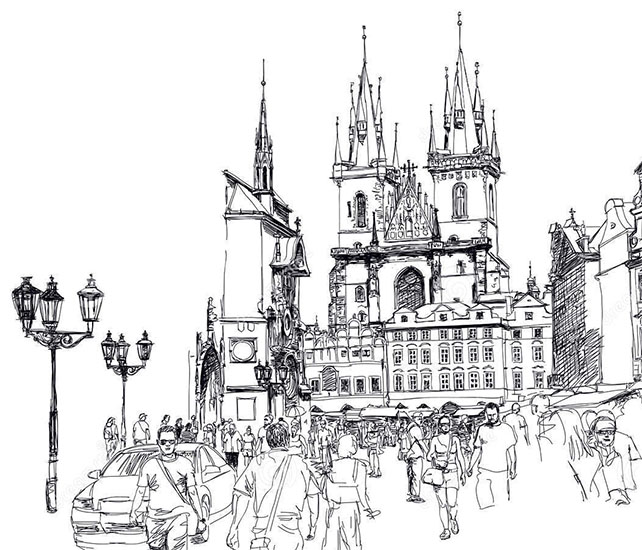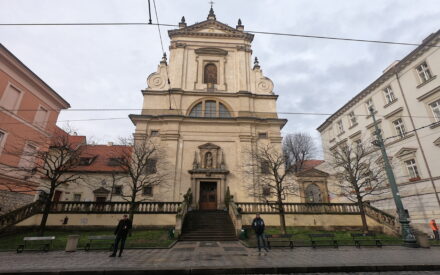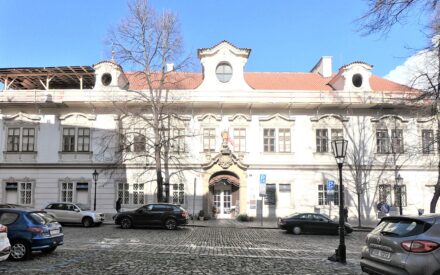
Memorial to Karel Hynek Mácha
This monument, built in 1911 in honour of the author of May (Máj), also makes appearances in a number of literary works. We can find a reference to it for instance in Jaroslav Seifert’s collection Farewell Spring (Jaro, sbohem),where he associates spring with Mácha, Petřín and love. Another is Franz Werfel who, in his autobiographical novel Straitened CircumstancesStraitened Circumstances (Kleine Verhältnisse)) dating from 1931 recalls that, when he was just twelve, his parents hired as governess Erna Tschepper, who came from straitened circumstances to assist the young Barbora Šimůnková, who also lived in the same house. Erna, however, soon became pregnant and was therefore fired. All this is reflected in the text of the story.
Franz Werfel: Straitened Circumstances (Kleine Verhältnisse)
The city was now interwoven with numerous charming gardens. Erna loved ”Hasenburg“ most of all, a park which with labyrinthine paths, wide grassy spaces, terraces, artificial caves, fountains, secret blossoming corners pressed against the slope of the hill. Even Hugo liked this place extending out into the wide surroundings, from whose terraced variable areas and ivy-clad handrail a person could look out at the cram-packed city as far as the misty suburbs on the horizon. The old cluster of the city centre was split in two by the ponderous and sleepy river. A number of stone and iron bridges echoed with the most diverse melodies from one embankment to the other. The oldest of these displayed against the brown or silver light which changed every second the numb pain of its fettered statues. These faded figures resembled darkened crystal druses, which pushed the pressure of history upwards from the rocky arches of the bridges. Hugo’s eyes rested mostly on the powerful cupola of the National Theatre which glittered green in the sun amidst the gothic strain of the hundred towers that peered out from the fog that had covered the city like an architectural animal spectre. He had been taken to this theatre two or three times already. From then, and from all sides, his heart kept observing the building, whose copper-like dome contained things that deeply impressed him: the theatrically painted curtain, vaults filled with light, the instruments‘ voices, the unique smell mixed with fine dust, rot, perfume, women and the magical secrets of the stage, the mystery of the incredible space that appears to solve the real one, yet more powerfully than the divine space that filters through the worldly space of the church.
This guided walk is a part of the “Democracy on the Brink. Historical lessons from the late 1930s” project supported by the Europe for Citizens programme of the European Union.
Další místa na téma "A literary walk through Kafka’s Prague on the trail of his story Description of a Struggle"


